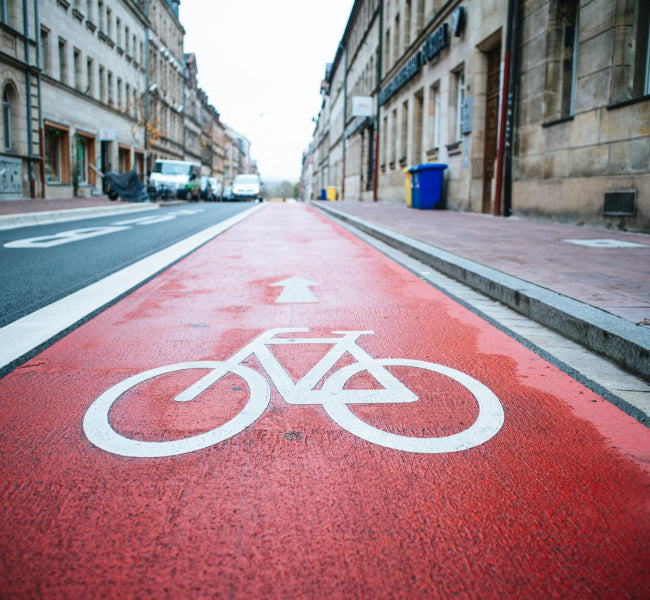In recent years, the rise of cycling in urban areas has been impressive. This trend is explained by a growing awareness of the environmental and health issues associated with urban travel.
However, the development of cycling cannot be achieved without careful consideration of dedicated infrastructure. It is therefore important to recognize that the quality and safety of cycling infrastructure are key factors in encouraging you to get on your bike every day.
So, to what extent can the existence of cycling infrastructure influence cycling in urban areas? How can our Trackap technology solutions also help you adopt cycling?
The different types of cycling infrastructure
To encourage the use of bicycles in cities, various infrastructures can be put in place. Each of them offers specific advantages and meets the specific needs of cyclists.
Cycle paths separated from car traffic
Cycle paths offer optimal safety for cyclists because they are exclusively designed for them. These paths allow for smoother coexistence between different road users.
This significantly reduces the risk of accidents . Thanks to these dedicated lanes, you can easily travel by bike, regardless of your age or riding level.
Cycle lanes on existing roads
Where urban space is limited, cycle lanes on roads are an attractive alternative.
Although less secure than separate tracks , they offer you a reserved space . They are generally marked with distinctive ground markings .
These signs remind motorists of the legitimate presence of cyclists on the road.
Meeting zones and 30 zones
Meeting zones and 30 zones are urban areas where the speed limit is 20 km/h and 30 km/h respectively . In these zones, you can drive safely in the middle of the road, without any specific arrangements.
Cohabitation between different users is facilitated by the reduction in the speed of motorized vehicles. This creates a peaceful environment conducive to the use of bicycles.
Secure bicycle parking
The availability of secure bicycle parking is also an essential element in encouraging cycling in the city. These are parking spaces dedicated to cyclists; they are often monitored or equipped with anti-theft systems. This way, you can leave your bike in peace while you go about your daily activities.
With this in mind, at Trackap , we develop connected tools and bicycle alarms that aim to facilitate and improve the cyclists' experience. We also offer mobile applications that allow you to locate available bicycle parking.
We also provide real-time tracking of the safest and fastest cycling routes , and we offer integrated surveillance systems to track your bikes and prevent theft.
The direct impact on bicycle use
Cycling infrastructure has a direct and significant impact on cycling in urban areas.
They transform your experience and encourage you to opt for this sustainable and efficient mode of transport. This translates into:
- Improving cyclist safety;
- Reducing conflicts between cyclists and motorists;
- The increase in the average speed of bicycle travel.
Apart from all this, the existence of adequate cycling infrastructure will allow you not to worry about parking your bikes.
The challenges and limitations of cycling infrastructure
Despite their many advantages, cycling infrastructure is not a magic bullet that would automatically lead to the widespread adoption of bicycles as a means of transportation. We believe that certain challenges still remain and should be addressed to encourage the widespread adoption of green mobility solutions. These include:
- Controlling the cost of building and maintaining infrastructure: Building a high-quality cycling network represents a significant investment for local authorities. Beyond initial construction, regular maintenance of trails and facilities is essential to ensure their longevity and attractiveness.
- The need for coherent planning and a dense network : To be truly effective, cycling infrastructure must form a continuous and well-connected network .
Taking these different parameters into account will make it possible to effectively promote the adoption of cycling in urban areas.
